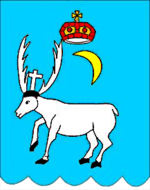Kingdom of Imereti
| Kingdom of Imereti | |||||
| იმერეთის სამეფო | |||||
| Kingdom, Part of Kingdom of Georgia (1330-1387, 1412-1446, 1453-1455, 1465-1478), vassal of Ottoman Empire (1555-1810), vassal of Russia (1804-1810) | |||||
| |||||
|
| |||||
 Kingdom of Imereti in 1490 | |||||
| Capital | Kutaisi (It was ruled by Ottomans between 1508 and 1770) | ||||
| Languages | Georgian | ||||
| Religion | Orthodox Christianity | ||||
| Government | Monarchy | ||||
| King | |||||
| • | 1260–1293 | David I (first) | |||
| • | 1789–1810 | Solomon II (last) | |||
| History | |||||
| • | Coronation of David I | 1260 | |||
| • | Re-Annexation to Georgia | 1330 | |||
| • | Restoration | 1387 | |||
| • | Independence from Georgia | 1455 | |||
| • | Vassal of the Ottoman Empire | May 29, 1555 | |||
| • | Vassal of the Russian Empire | April 25, 1804 | |||
| • | Russian Annexation | February 20, 1810 | |||
| Today part of | | ||||
| History of Georgia |
|---|
 |
|
History by topic |
|
|
The Kingdom of Imereti (Georgian: იმერეთის სამეფო) was a Georgian monarchy established in 1455 by a member of the house of Bagrationi when the Kingdom of Georgia was dissolved into rival kingdoms. Before that time, Imereti was considered a separate kingdom within the Kingdom of Georgia, to which a cadet branch of the Bagration royal family held the crown beginning in 1260 by Davit VI, King of Georgia after he revolted against the Mongolian rule and fled to Abkhazia. This was due to the Mongolian conquest of the 13th century which decentralized and fragmented Georgia, forcing the relocation of governmental centers to the provinces. Imereti was conquered by Giorgi the Brilliant, who was subject to the Mongols, and united with the east Kingdom of Georgia.[1] From 1455 onward, however, the kingdom became a constant battleground between Georgian, Persian, and Turkish forces until it was annexed into Russia completely in 1810. Throughout the course of that time, Mengrelia, Abkhazia and Guria princedoms declared their independence from Imereti and became their own governments. In Persian - Azeri nomenclature the name of the region is changed to " baş açıq" which literally means "without a head scarf".[2]
Kings of Imereti
First House of Imereti
- David I (1258–1293)
- Constantine I (1293–1326)
- Michael (1326–1329)
- Bagrat I (1329–1330)
- Vacant (1330–1387)
- Alexandre I (1387–1389)
- George I (1389–1396)
- Constantine II (1396–1401)
- Demetrius I (1401–1455), only recognized as Duke by Alexander I of Georgia
Second House of Imereti
- Demetrius II (1446–1452)
- Bagrat II (1463–1478)
- Alexander II (1478–1510)
- Bagrat III (1510–1565)
- George II (1565–1585)
- Leon (1585–1588)
- Rostom (1588–1589, 1590–1605)
- Bagrat IV (1589–1590)
- George III (1605–1639)
- Alexander III (1639–1660)
- Bagrat V (1660–1661, 1663–1668, 1669–1678, 1679–1681)
- Vakhtang Tchutchunashvili (1661–1663)[3]
- Archil (1661–63, 1678–79, 1690–91, 1695–96, 1698)
- Demetre (1663–1664)[3]
- George IV (1681–1683)[3]
- Alexander IV (1683–1690, 1691–1695)
- Simon (1699–1701)
- George V (1696–1698)[3]
- Mamia (1701–02, 1711, 1713)[3]
- George VI (1702–1707)[3]
- George VII (1707–11, 1712–13, 1713–16, 1719–1720)
- George VIII (1716, 1720)[3]
- Alexander V (1720–1741, 1741–1746, 1749–1752)
- George IX (1741)
- Mamuka (1746–1749)
- Solomon I (1752–1766, 1768–1784)
- Teimuraz (1766–1768)
- David II (1784–1789, 1790–1791)
- Solomon II (1789–1790, 1792–1810)
Notes and references
- ↑ D.M.Lang - Georgia in the Reign of Giorgi the Brilliant (1314-1346), Bulletin of the School of Oriental and African Studies, University of London, Vol. 17, pp. 74-91
- ↑ Vladimir Minorsky , La Perse au XV siècle entre la Turquie et Venice, Translation to Persian language , page 36
- 1 2 3 4 5 6 7 Non-Bagrationi monarch.
